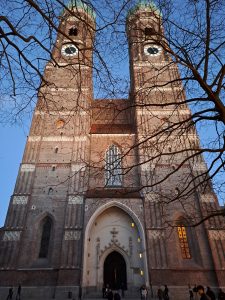 In January I travelled to Germany in search of the places Hans and Sophie Scholl had lived and studied. They were arrested, tried and executed for their part in the anti-Nazi White Rose resistance group that was active in Germany in 1942-43.
In January I travelled to Germany in search of the places Hans and Sophie Scholl had lived and studied. They were arrested, tried and executed for their part in the anti-Nazi White Rose resistance group that was active in Germany in 1942-43.
The White Rose was a resistance movement founded by a group of student medics in Munich during the Second World War. Hans Scholl, Alexander Schmorell, Christoph Probst and Willi Graf were all united in their opposition to the Nazi regime. They were a minority who dared to speak out against Hitler and the Nazi Party. Their resistance took the form of pamphlets – sometimes quite intellectual – in which they sought to convince people of the injustices of the Nazis and the duty of all Germans to oppose Hitler. Sophie Scholl, Hans’s younger sister, joined her brother in Munich in 1942 and soon became a committed member of the White Rose. Tragically, they all paid the ultimate price for their bravery.
The first stop on my tour was the Ludwig Maximilian University in Munich where Hans was a medical student and Sophie was studying Biology and Philosophy. It was here on 18 February 1943, in the grand Lichthof, that Hans and Sophie were spotted distributing leaflets and arrested by the caretaker, Jakob Schmidt, a committed Party member.
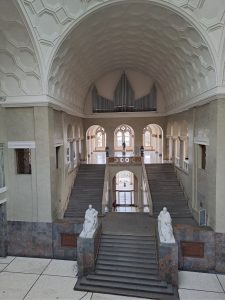

Hans and Sophie went to the University with a suitcase full of leaflets written by their friend and supporter, Professor Hans Huber. While lectures were underway, they left piles of leaflets outside the lecture halls that surround the atrium, on staircases and window sills. They took the final pile of leaflets to the top floor and placed them on the balustrade. In a moment of youthful exuberance, Sophie pushed the leaflets off the balustrade. They fluttered to the floor, just in time for Jakob Schmidt to appear.
The Lichthof now displays a permanent memorial to the White Rose, and houses an excellent museum detailing their story.
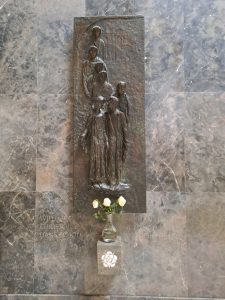
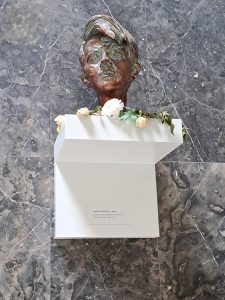
It was fascinating to see the actual leaflets that they produced – densely typed text, in the style of an earnest student essay. The first leaflet quotes Goethe and Schiller. The leaflets were reproduced by hand using a duplicating machine and then posted to random addresses throughout Munich. Later the network expanded and they were able to post leaflets across Germany.

Following their arrest, Hans and Sophie were taken to the Gestapo Headquarters in Munich, located in the Wittelsbach Palace. It was here that they were imprisoned and interrogated. The building no longer exists, having been badly damaged in the air raids of 1944 and pulled down in 1964.

They were interrogated for four days, after which they, and their friend Christoph Probst, were charged with treason. The trial took place on 22 February at the Palace of Justice. The judge was the notorious Roland Freisler, President of the People’s Court.

The outcome of the trial was a foregone conclusion. Hans, Sophie, and Christoph were found guilty, sentenced to death and guillotined later that same day at Stadelheim Prison. Hans was twenty-four years old, Sophie was twenty-one.
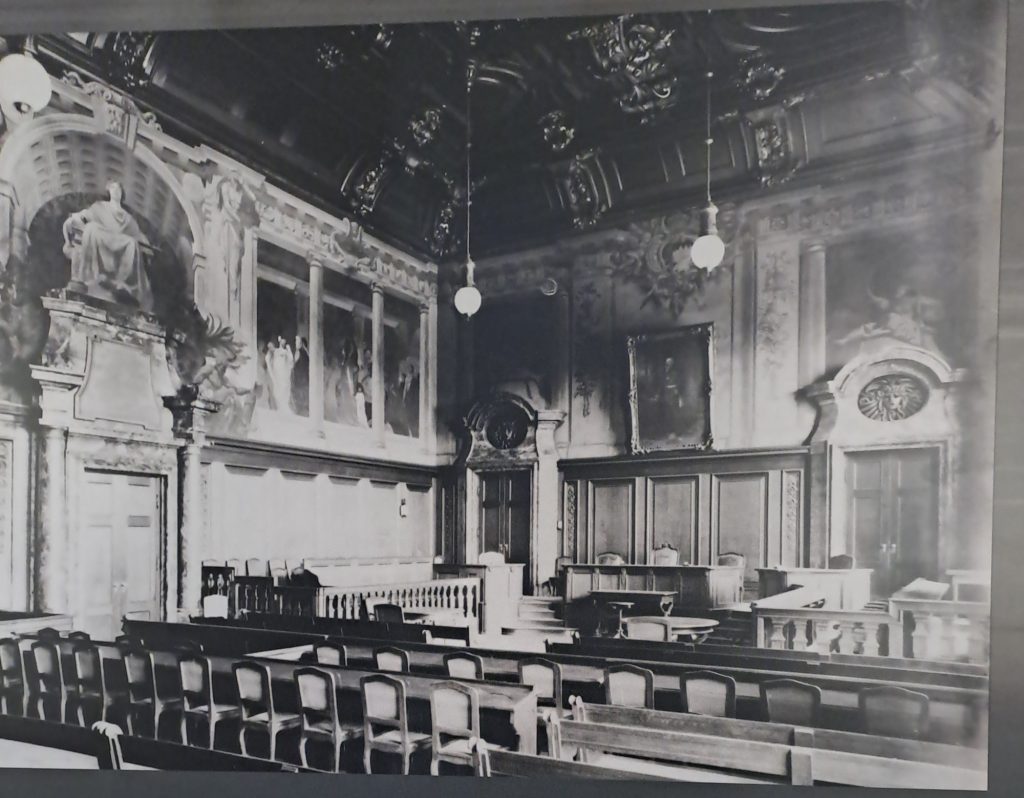
During my trip, I took the train to Ulm to see the place where Hans and Sophie had grown up with their siblings Inge, Elisabeth and Werner, and their parents Magdalena and Robert. They lived in a house on Münsterplatz, in the heart of the town, overlooking the magnificent Minster.


Although undoubtedly much changed since the 1940s, Ulm is still a delightful town situated on the banks of the Danube. Following the war, Robert Scholl became mayor of Ulm. Pictured here is the Town Hall.

It was too cold and wet for me to venture out to the cemetery in Stadelheim where Hans and Sophie are buried. Instead I visited the outstanding NS-Dokumentationszentrum which charts the rise of National Socialism in Munich between the two world wars, and also has a section devoted to the White Rose resistance movement. The building is situated next door to the former Führerbau where Hitler met Chamberlain, Daladier and Mussolini in September 1938 for the signing of the Munich Agreement that gave Hitler control over the Czech Sudetenland.

Further reading
If you’re interested in the White Rose, I recommend the following books:
- A Noble Treason: The Story of Sophie Scholl and the White Rose Revolt Against Hitler by Richard Hanser
- Sophie Scholl and the White Rose by Annette Dumbach & Jud Newborn
- Das Kurze Leben von Sophie Scholl by Hermann Vinke
- At the Heart of the White Rose: Letters and Diaries of Hans and Sophie Scholl edited by Inge Jens
- The White Rose: Munich 1942-1943 by Inge Scholl